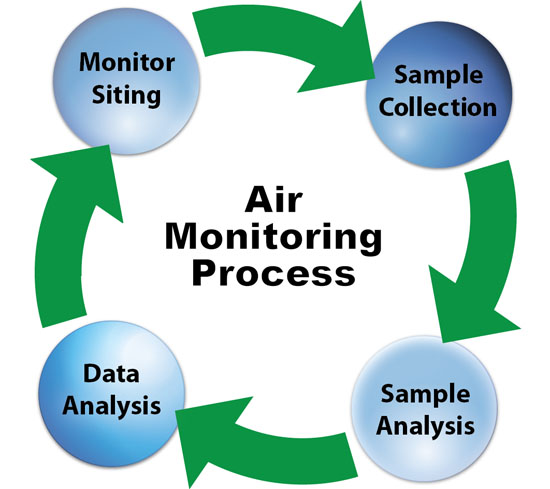Air toxics, also known as hazardous air pollutants (HAPs), are those pollutants that are known or suspected to cause cancer, other serious health effects, or adverse environmental conditions. IDEM’s statewide ambient outdoor air monitoring network includes several air toxics monitoring sites where air samples are collected to measure air toxics in the air we breathe.
Although there are natural sources of air toxics such as wildfires, these pollutants primarily come from emission sources commonly found in urban areas, including mobile sources such as motor vehicles, stationary industrial sources, small area sources such as auto refinishing shops and drycleaners, and indoor sources such as cleaning chemicals and compounds. As such, ambient air toxics monitoring sites are generally located in areas with multiple emission sources where compounds are most likely to be present in the ambient outdoor air.
IDEM evaluates and selects urban areas for monitoring based primarily on population density and presence of industry. Dense populations also result in increased motor vehicle emissions. Once IDEM determines it is necessary to conduct air toxics monitoring in a specific area (such as a particular area within a city), it determines the exact location to install and operate the air samplers and instruments based on established criteria:
- There must be unobstructed air flow for samplers and instruments
- The sampler must be placed at a height of 2 to 15 meters above ground level (the breathing zone)
- The site must be secure
- IDEM staff must have reasonable access to the samplers and instruments
- Other considerations include the expense and difficulty of site preparation and equipment installation, as well as the availability of other sites in the area
The ambient air quality monitoring process is one of continuous evaluation, improvement and refinement, as shown in the diagram below. IDEM reviews its air toxics monitoring network every year to determine if existing monitoring sites should continue to operate or new locations should be added based on current air quality data, emissions sources, and population density of Indiana’s urbanized areas. The Air Toxics Program provides descriptions of Indiana’s current air toxics monitoring sites.

